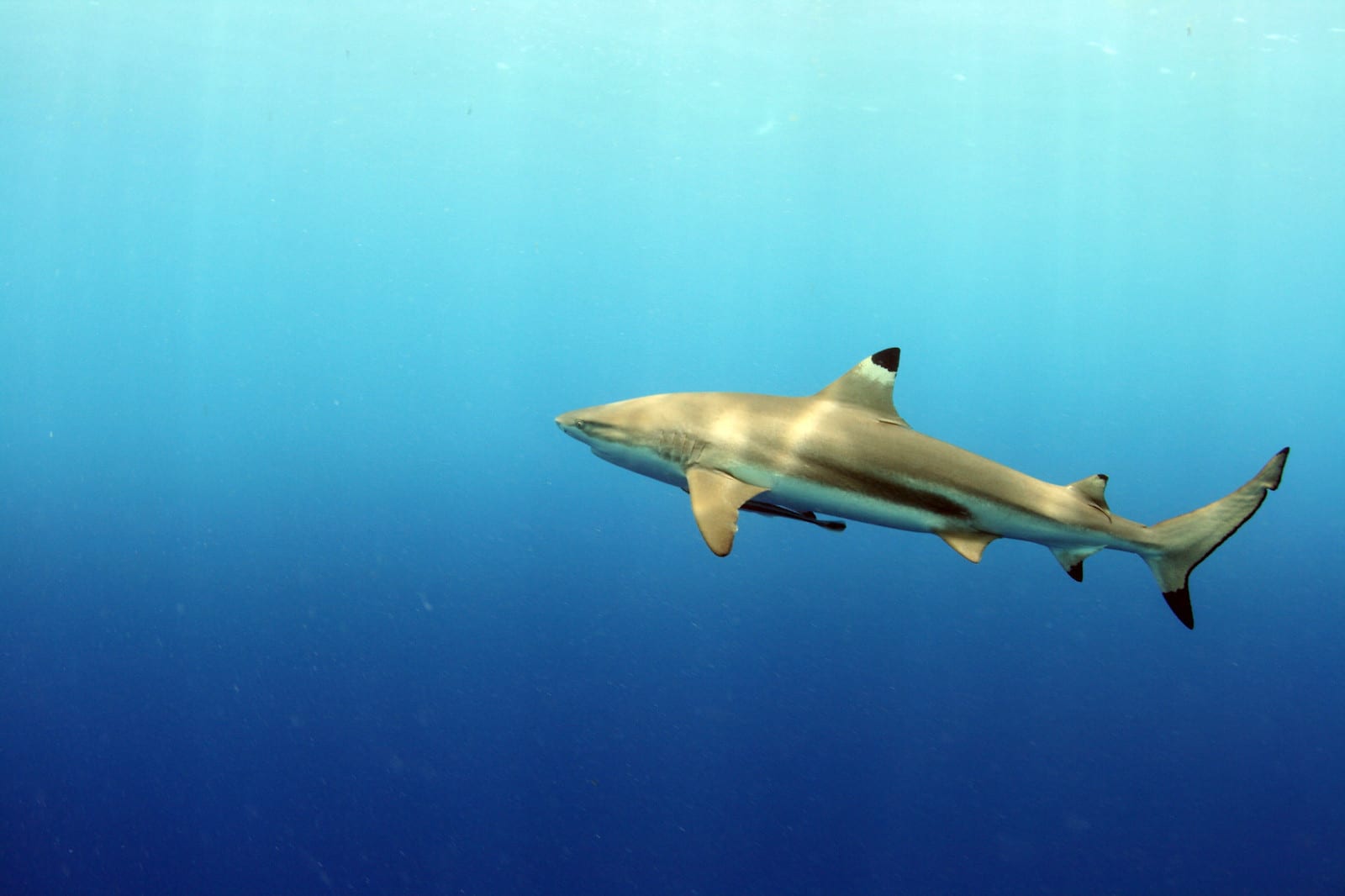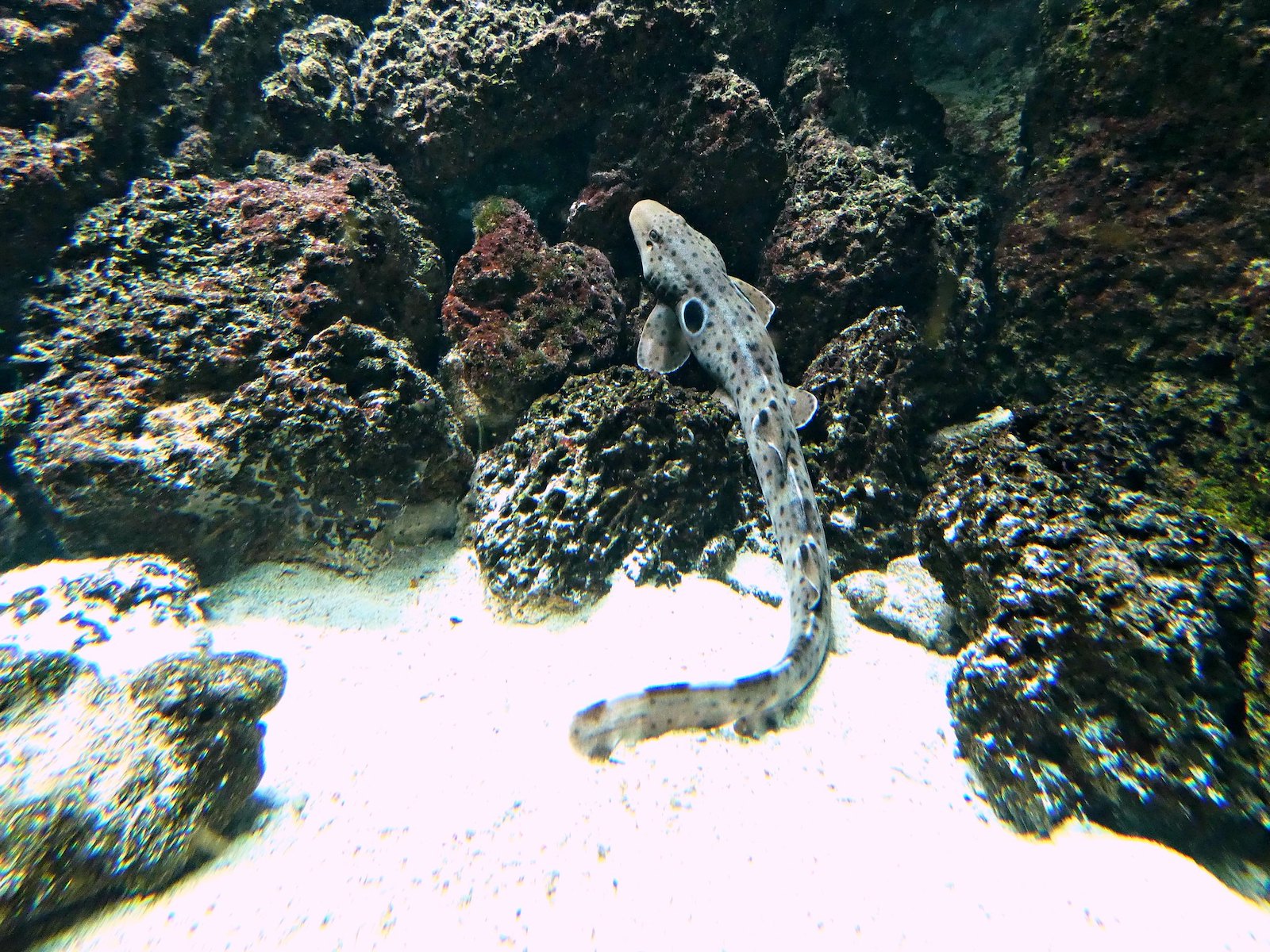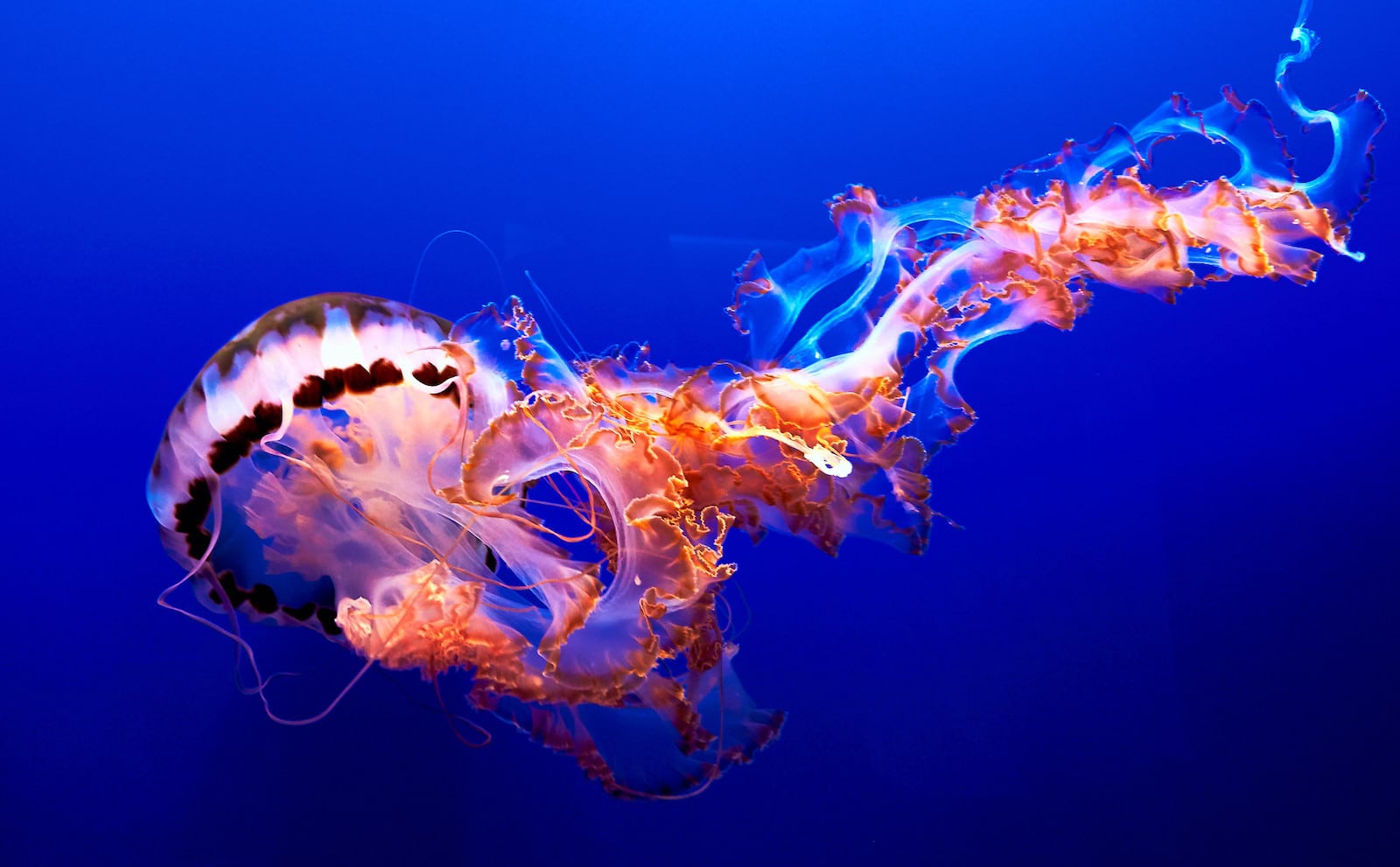The ocean waters around Vietnam have a few sharks, but none are known to cause lethal injuries. A few incidents of bites have occurred in the past, but sharks in this area tend to stay away from humans for the most part.
There are several types of sharks in Vietnam, only a few of which are a threat to humans. There’s also the notorious jellyfish lurking it its waters.
Aggressive Shark Types in Vietnam
The highest number of recent shark attacks in the country happened in Quy Nhon, Central Vietnam, in 2010 with 79 bites. According to reports, the only species that have been recorded to be responsible for some of these attacks are a Blacktip Shark, Graceful Shark, and a Pigye Shark.
Blacktip Sharks

Blacktip Sharks are recognizable by their darkened fins and tail tips. Adults typically reach 150 pounds and a length of 1.5 meters/4.9 feet. This species is known to be energetic and can attack a school of fish in a spinning leap, and females can give birth to one to ten babies every other year. While Blacktips don’t prey on humans, there have been many reports of attacks by them worldwide.
Graceful Shark
Graceful Sharks are rated as a “vulnerable species” and can reach a length of 1.7m/5.6 feet long, living at an ocean depth of about 50 meters/160 feet down. These animals typically feed on boney fish and crustaceans but occasionally attack humans. Females usually give birth to up to nine pups at a time, often in January or February.
Pigye Shark
Also known as a “Java Shark,” the Pigeye Shark is an apex predator that feeds mainly on crustaceans, boney fish, sea snakes, and some aquatic mammals like dolphins and whales. This species typically reaches an adult length of about 1.9-2.5 meters/6.2-8.2 feet. Even though it isn’t one of the most aggressive types of sharks on humans, it has been on a few attack reports.
Other Sharks and Jellyfish
There are also less dangerous species of sharks in Vietnam’s waters, but the menacing jellyfish is something to keep an eye out for.
Coral Catsharks

Coral catsharks are not too big, only reaching about 70 cm/28 inches in length by adulthood. They are primarily nocturnal and bottom feeders, eating small fish that live in reefs. These animals are harmless, not threatened, and often bred in captivity.
Whitespotted Bamboo Shark
Another docile shark species, the Whitespotted Bamboo Shark, typically feeds on small fish and invertebrates that live on the bottom of their environment. They can reach 93 cm/37 inches long in adulthood and are usually found in coral reefs in the Pacific Ocean.
Whale Sharks

Whale Sharks frequent the waters close to Nha Trang, but these gentle giants are harmless. They travel in the springtime to the bay areas in this part of Vietnam to eat plankton and krill found near the islands. These animals can weigh more than 20 tons and reach an adult length of 40 feet, but divers still rarely see them in the wild.
Jellyfish

Locals will say that jellyfish in Vietnam’s ocean waters are more dangerous than sharks. Especially from October to May, many jellyfish occupy the area and have been known to sting swimmers. To avoid getting stung, natives recommend swimming in clothing and keeping some vinegar on hand to treat injuries. While these encounters may be annoying, they are not threatening.
There is only a minimal chance of running into a shark while swimming in the oceans by Vietnam, but it’s still an excellent decision to be aware of your surroundings. Even though the species found in these waters are not too dangerous per se, they have caused minor injuries on rare occasions.


 The Bluffs Ho Tram Strip – Ba Ria-Vung Tau Province
The Bluffs Ho Tram Strip – Ba Ria-Vung Tau Province